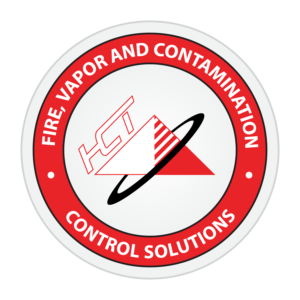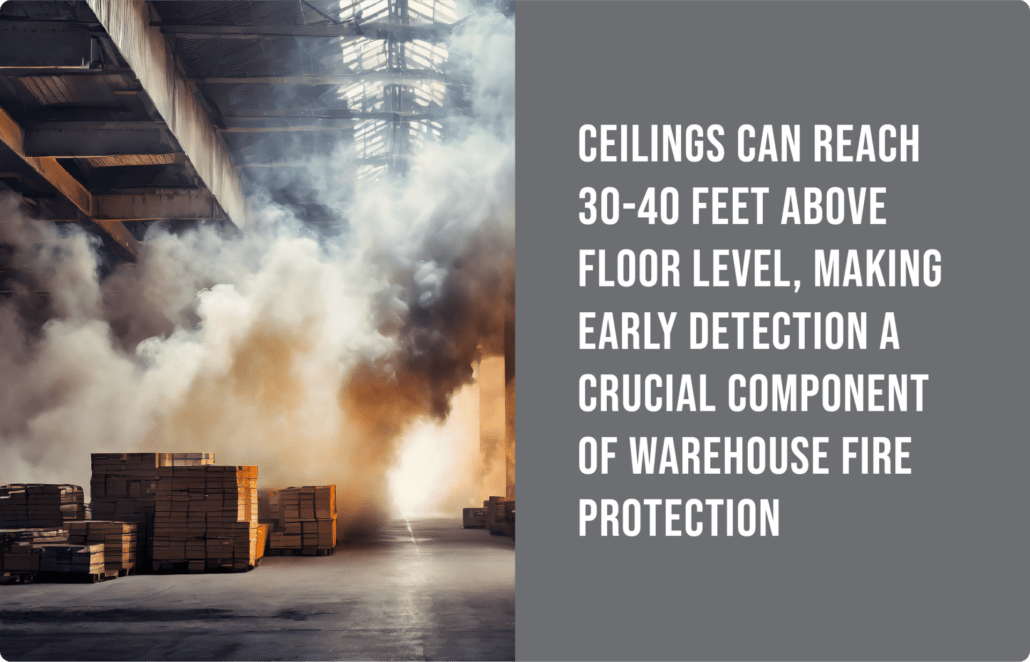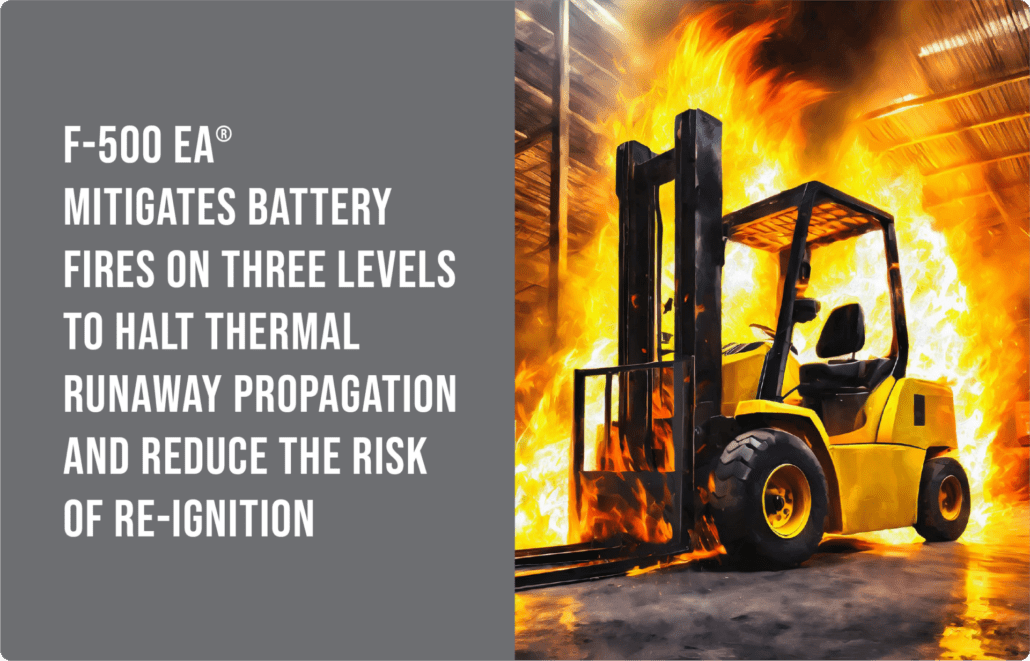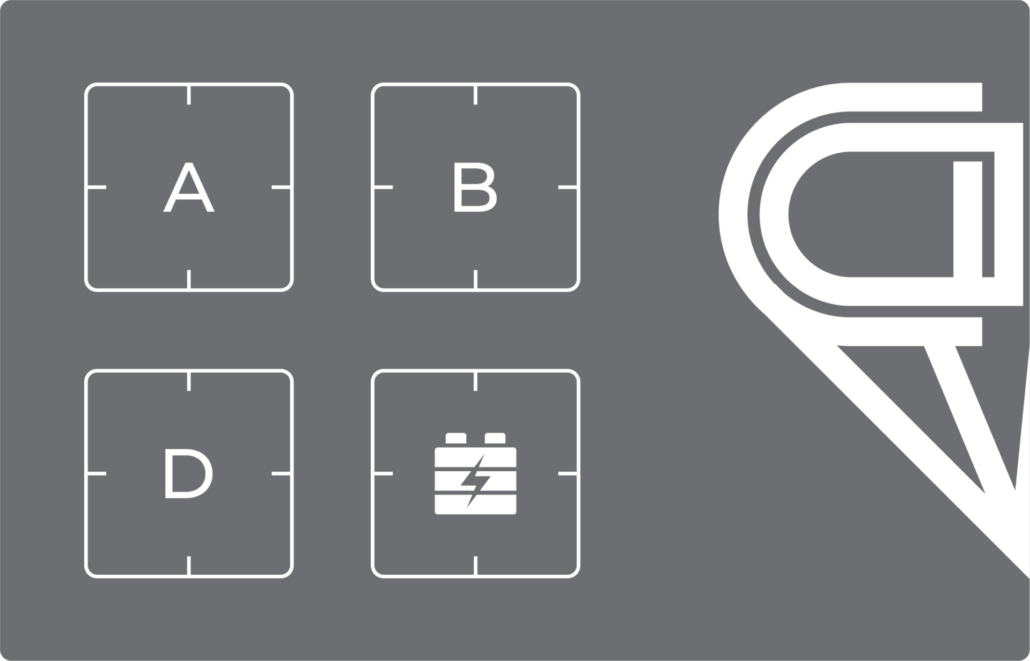Warehouse Fire
Protection
How to Safeguard
Your Facility in the
Age of Automation
Motivation for Change
Incorrect material handling
and lifting techniques have been
a leading cause of injuries within
warehouses for decades
Mega industrial warehouses, distribution centers, and logistic leaders are quickly converting to electric material handling equipment to prioritize clean emissions, increase safety, and streamline operations. These lithium-ion battery-powered fleets can include:
-
Forklifts
-
Pallet Jacks
-
Pallet Stackers
-
Reach Trucks
-
Order Pickers
-
Tow Tractors
-
Aerial Lifts
-
Autonomous Mobile Robots (AMR)
An electric-powered material handling system can contribute to a safer work environment and more efficient workflow. However, it has never been more important to keep warehouse fire protection top of mind as we plug into a future driven by innovation.
Detection Challenges
The ability to detect explosive
and toxic gases during the early
stages of a lithium ion battery fire
is crucial for extinguishment
Material handling equipment generally utilizes 15 kWh – 24 kWh lithium-ion batteries. These modules contain immense energy that can quickly promote the horizontal spread of flames to nearby exposed inventory, storage racks, and machinery. Although warehouse managers cannot control the volatile nature of a lithium-ion battery fire, early detection and thoughtful fire protection practices can provide your team with the best chance of minimizing property and water damage, loss, and downtime.
Proximity
Burning lithium-ion batteries can produce abundant gases early on. This vapor cloud can rapidly increase the intensity of a warehouse fire and introduces the possibility of vapor cloud combustion. It would not be uncommon for a blaze of this intensity to outpace the detection capabilities of an Early Suppression Fast Response (ESFR) sprinkler system. ESFR sprinklers can be 30-40 feet above floor level in a warehouse setting, hindering their ability to control a fast-moving lithium-ion battery fire.
Chemistry
Hydrogen, a flammable gas commonly detected during lithium-ion battery combustion, is lighter than air. However, hydrogen is just one of more than 100 flammable, explosive, and toxic off-gases released during these fires. This laundry list includes numerous gases possessing a comparable molecular weight to air, creating a fire hazard that isn’t conducive to early detection. These incidents can be more prevalent in designated parking and charging areas where battery energy storage is concentrated.
Engineering Success
Creating a balance between
complete confinement and
extreme elevation to protect
our warehouses
As vertical rack storage continues to push the limitations of mega warehouses, typical ceiling heights have extended to 30-40 feet. These ceiling-level sprinklers don’t take parking and charging areas into account, leaving material handling equipment hazards unchecked. This has led some warehouse managers to invest in extravagant containment methods. Although these systems do offer benefits, they come with their fair share of fire protection challenges.
Experiments conducted by UL involving Battery Energy Storage Systems (BESS) outline several key points.
Ventilating
The abrupt ventilation of an enclosed area, such as a BESS, may result in a deflagration or rapid transition to flashover.
Metering
The use of portable gas meters to evaluate interior conditions following a BESS fire can place personnel in a hazardous environment.
Monitoring
Built-in combustible gas and hydrogen detectors can be effective for indicating thermal runaway off-gassing, but they are not reliable for ongoing hazardous gas assessment.
Due to the life safety concerns presented by these structures, we believe a midpoint is necessary for effective fire protection. This could look like a canopy equipped with ESFR sprinkler heads and a robust vapor detection system fabricated over designated areas.
Best Practices
How we can improve
the outcome of a contemporary
warehouse fire by implementing
a multifaceted approach
ESFR systems fashioned in high-ceiling warehouses can be slow to react in the event of a rapidly unfolding warehouse fire. A more localized fire detection and incident response system capable of mitigating lithium-ion battery fires on multiple levels is necessary for consistent outcomes.
An F-500 EA® solution mitigates lithium-ion battery fires on three distinct levels: flammability, explosivity, and toxicity.
Flammability
F-500 EA® encapsulates flammable corrosive electrolytes and absorbs thermal energy up to 10x faster than water to successfully halt thermal runaway propagation.
Explosivity
F-500 EA® ceases the production of combustible materials such as hydrogen, methane, and ethylene to prevent an explosion from occurring.
Toxicity
F-500 EA® reduces the concentration of toxic off-gases, including hydrogen fluoride, carbon monoxide, and carbon dioxide to protect human life.
Prioritizing Fire Protection
Without adequate fire protection,
your storage facility could potentially
suffer a number of consequences in
addition to a loss of life and property damage
1. Fines from a local governing body.
2. Higher insurance premiums, penalties, and refused coverage.
3. A significant loss of revenue during the period of re-building.
4. An irreparable reputation.
These outcomes represent the importance of a proactive approach to fire safety, involving regulations inspections with fire departments and strict compliance with building codes.
The Diamond Doser® is a water-driven proportioner specifically designed to dose F-500 EA® concentrate directly into your ESFR fire sprinkler system‘s water stream. While incipient fires involving more organic materials used to take several minutes to become fully involved, today’s warehouse fires contain explosive, toxic, and flammable liquids that can cause blazes to spread rapidly. When every second counts, water is not enough.
Versatility
An engineered system designed to work hand in hand with NFPA (National Fire Protection Association) 18A recognized Encapsulator Technology, allowing for:
1. Class A Fire Protection
2. Class B Fire Protection (Polar/Non-polar/Three-dimensional)
3. Energized Environment Fire Protection
4. Class D Fire Protection
5. Lithium Ion Battery Fire Protection
Continuity
An uninterrupted system as long as water and concentrate are available. If the tank is depleted, concentrate can flow continually from a separate drum or tote.
Consistency
A system that is always predictable, producing a solution with a consistent ratio that doesn’t fluctuate if additional sprinkler heads open at your facility.
Simplicity
Installation, operation, and maintenance are simple. The system is driven by water flow alone with no need for constant calibration or pressure balancing.
Efficiency
A flexible system with a wide pressure range of 2-12 bar or 2-16 bar that automatically corrects admixture accordingly. Testing is convenient, producing no agent waste.
Affordability
Instant savings on fire sprinkler installation as well as retaining thousands over time. This is done through effective fire suppression and economical annual NFPA-mandated testing that adheres to building fire codes.
Eco-friendly
Avoid unexpected system discharges, contamination, and disposal costs with a reliable system that utilizes fluorine free, biodegradable, and noncorrosive Encapsulator Technology.
Invest in HCT’s Fire Protection Systems
Prioritize fire safety with an innovative
water-driven proportioner capable of
pumping eco-friendly F-500 EA®
directly into your water stream
Are you ready to invest in superior warehouse fire protection with F-500 EA®? We can help you implement a proactive approach that budgets for invaluable fire protection. Take the first step and contact our team of Encapsulator Technology Specialists to set up a free consultation.







